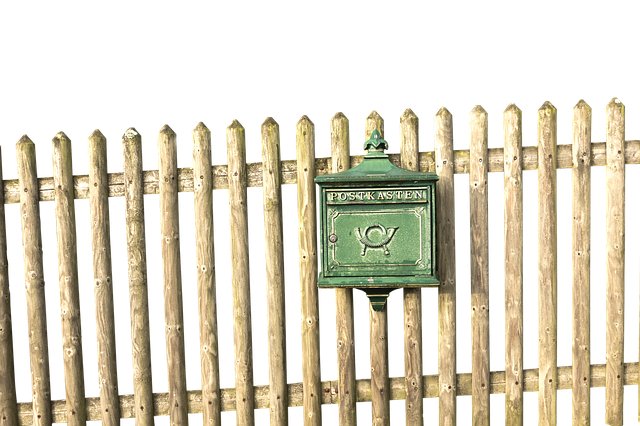Introduction
Coastal areas present unique challenges when it comes to fencing, with salt air, moisture, and extreme weather conditions demanding robust solutions. This article explores the benefits of durable wooden fencing as a superior alternative for these environments. We delve into understanding specific coastal fencing challenges, highlighting the advantages of wood species suited to such climates, and offering essential installation and maintenance guidance. Additionally, we examine the aesthetic appeal and potential property value boost that well-chosen, maintained wooden fences can offer.
- Understanding Coastal Fencing Challenges
- Benefits of Durable Wooden Fencing
- Choosing the Right Wood Species
- Installation Considerations for Coastlines
- Maintenance Tips for Longevity
- Esthetic Appeal and Property Value
Understanding Coastal Fencing Challenges
Coastal areas present unique challenges when it comes to fencing due to their harsh, often corrosive environments. Salt air, strong winds, and frequent storms can significantly impact traditional fencing materials. Wood, in particular, requires extra care as it is susceptible to moisture and pests like termites or wood borers. In these regions, durable wooden fencing demands special consideration to ensure longevity.
To mitigate these challenges, choosing the right type of wood is essential. Some varieties are naturally more resistant to decay and insect damage, making them ideal for coastal settings. Additionally, proper treatment methods, such as pressure-treating or applying protective coatings, can significantly enhance the durability of wooden fences. These strategies ensure that the fencing not only withstands the coastal climate but also maintains its aesthetic appeal over time.
Benefits of Durable Wooden Fencing
Durable wooden fencing offers an array of benefits for coastal areas, where traditional materials might struggle to withstand the harsh marine environment. Firstly, wood’s natural resistance to corrosion makes it an excellent choice for coastal settings. Unlike metal fences, wood does not rust or weaken over time due to salt water exposure, ensuring structural integrity and longevity. This characteristic is vital for protecting properties from strong winds and storms.
Additionally, wooden fencing provides excellent aesthetic appeal, enhancing the overall look of coastal homes and businesses. The warm tones and natural textures of wood complement the surrounding environment, creating a harmonious blend with the ocean views. Moreover, wood can be easily stained or finished to match specific design preferences, allowing for customization and a unique sense of place.
Choosing the Right Wood Species
When selecting wood for coastal fencing, choosing the right species is paramount. Softwoods like cedar and redwood are popular choices due to their natural resistance to decay and insects, making them ideal for harsh marine environments. These woods also have a beautiful grain that enhances the aesthetic appeal of your fence.
However, it’s essential to consider the specific conditions in your area. Some species, like treated pine, offer excellent durability at a more affordable cost but may not possess the same natural resistance to moisture and salt air as cedar or redwood. Understanding the local climate and environmental factors will help guide your decision, ensuring your fencing remains robust and aesthetically pleasing for years to come.
Installation Considerations for Coastlines
When installing wooden fencing in coastal areas, several unique considerations come into play to ensure durability and longevity. One of the primary challenges is the impact of salt water and high humidity levels, which can accelerate wood degradation. Therefore, choosing a robust fence post material like treated timber or even steel is essential. These materials are designed to withstand corrosion and decay better than untreated wood.
Another critical aspect is proper grounding and anchoring. Due to strong coastal winds and potential storm surges, fences must be securely anchored to prevent uprooting or tipping over. This often involves deeper digging and using concrete foundations or anchors specifically designed for these conditions. Additionally, regular maintenance, including pressure washing and re-staining, can significantly prolong the life of the fence, protecting it from the relentless coastal environment.
Maintenance Tips for Longevity
Regular cleaning and inspection are key to maintaining your wooden fence in coastal areas. Salt air and moisture can accelerate wood decay, so keep an eye out for any signs of rot, warping, or peeling. A pressure washer can help remove salt buildup and other debris, while a brush and mild detergent can tackle stubborn stains.
Staining or sealing your fence every few years will also protect it from the elements. Choose a water-based, UV-resistant stain designed for exterior use. Sealing fills in pores and cracks, locking out moisture and slowing down the aging process. Regular maintenance ensures your durable wooden fence stays strong and beautiful for decades to come.
Esthetic Appeal and Property Value
Durable Wooden Fencing adds more than just functional protection for coastal properties; it enhances aesthetic appeal and property value. The natural beauty of wood, when properly treated to withstand salt air and moisture, can complement the surrounding landscape and architecture, creating a harmonious outdoor space that attracts buyers and increases curb appeal. A well-designed wooden fence can serve as a focal point, framing views, defining property lines, or providing privacy while blending subtly with the coastal environment.
This visual enhancement goes beyond individual satisfaction; it translates into tangible benefits for homeowners. In competitive real estate markets, properties with attractive, high-quality features like durable wooden fencing often command higher selling prices and shorter days on the market. The investment in such fencing not only safeguards against environmental damage but also acts as a strategic one, potentially increasing the property’s long-term value and its appeal to prospective buyers.
